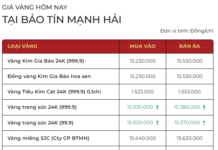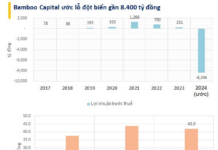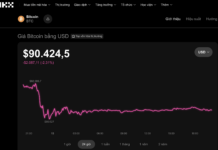Marine freight rates for export orders are currently on the rise, accounting for up to 15% of product costs. While marine freight rates are increasing rapidly, businesses have little choice but to accept them, as Vietnam’s exports to major markets such as the US and the EU are largely dependent on foreign shipping lines.
Businesses Burdened with Additional Costs
For months, the Phuc Sinh Group has had to subsidize each exported container by $5,000 due to their use of the CIF (cost, insurance, and freight) sales term. This is because freight rates to markets such as Europe, the US, and the Middle East have surged. These markets are the group’s primary export destinations for coffee, pepper, and various spices.

Soaring marine freight rates have dealt a heavy blow to exporting businesses.
Mr. Phan Minh Thong, CEO of Phuc Sinh Group, said that from April to June 2024, marine freight rates from Ho Chi Minh City’s ports to the US and Europe surged by 300%, from $2,950 to $7,350 per 40-foot container. This rapid increase in freight rates has inflicted significant losses on the group.
“Skyrocketing marine freight rates have burdened businesses with additional costs, and they face the risk of delayed deliveries due to vessel shortages. If a business exports 100 containers in a month, it means they have to subsidize an extra $500,000 (nearly VND 13 billion),” Mr. Thong estimated.
Faced with this reality, Mr. Thong said that the group has not been able to negotiate with customers to share the risks. Therefore, orders have been delayed to avoid further losses. However, this is only a temporary solution, as late deliveries can also lead to a series of problems, such as the risk of contract penalties or potential loss of orders.
Sharing a similar situation, a representative of Hoang Gia Import-Export Company, specializing in agricultural product exports to China and South Korea, said that freight rates have increased by about 15-20% compared to two months ago. “It is estimated that the company loses billions of VND each month due to increased costs, but there is no other option. The pressing issue now is the difficulty in securing vessels, which has led to last-minute shipment postponements,” they said.
According to the Vietnam Logistics Services Enterprises Association (VLA), marine freight rates have been on the rise since the beginning of 2024 and show no signs of cooling down. Especially in the last month, rates have surged unexpectedly and are now higher than at the beginning of the year. These developments not only pose challenges to businesses due to increased costs but also expose them to various risks, including contract penalties for late deliveries.
The main reasons for this situation are the rerouting of vessels from the Red Sea through the Cape of Good Hope, which has caused a capacity shortage and congestion in European ports, and the escalating trade war between the US and China.
“The US government plans to impose higher tariffs on various Chinese-origin goods from August, so Chinese exporters and American importers are trying to beat the deadline. They are willing to pay higher freight rates to secure space and containers,” the VLA representative said.
A representative of the Association of Maritime Agents and Brokers also said that foreign shipping lines used to quote freight rates for a period of 15 days to one month, but now they are quoting rates on a weekly basis and sometimes even changing them within a day. This unit calculated that with a rate increase of 10-15%, exporters would have to pay an additional $10-15 per container, and with tens of millions of containers, the cost increase for businesses would be enormous.
The owner of a domestic logistics company also revealed that at this point, Chinese businesses are willing to pay up to $1,000 for a spot on a vessel, while Vietnamese businesses can only offer $600, making it challenging to compete in terms of freight rates.

With a 10-15% rate increase, exporters will have to pay an additional $10-15 per container.
Leveraging Geographic Advantage into Opportunities for Logistics
Amid the tense situation with freight rates, the Ministry of Industry and Trade still recommends that exporting businesses consider shifting their focus to more favorable and nearby markets such as China, Japan, or ASEAN countries. In reality, freight rates to North America and Western Europe have surged by 100% compared to the low season, while rates to Japan, South Korea, and Australia have remained stable.
The Vietnam Maritime Administration has also recently requested that units strengthen the supervision of marine transport businesses providing container cargo transport services by sea to implement the listing of prices and surcharges for container cargo transport services by sea (prices and surcharges).
Many experts believe that to fundamentally reduce logistics costs domestically, Vietnam needs to invest in a nationwide logistics network to connect growing, processing, and industrial areas with transportation systems at the highest level through modern connective applications.
At the same time, with its advantageous geographical location, Vietnam should be oriented to become a global logistics hub, transforming the country into a major transshipment and cargo connection center. This will gradually shape Vietnam into a center for agricultural product trading and cargo transshipment with China, ASEAN, and other world markets.
Around 230,500 businesses to join the economy in 2024
In the first month of 2024, there were 13,536 newly established businesses, increasing by 24.8% compared to the same period in 2023. Previously, the General Statistics Office forecasted that there will be a total of 230,500 businesses joining the economy in 2024.





































